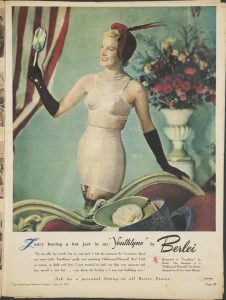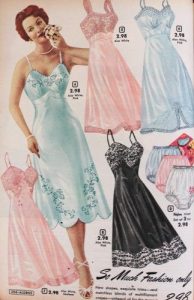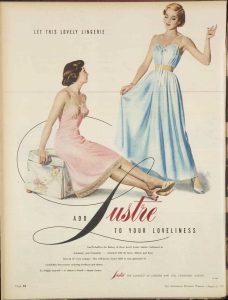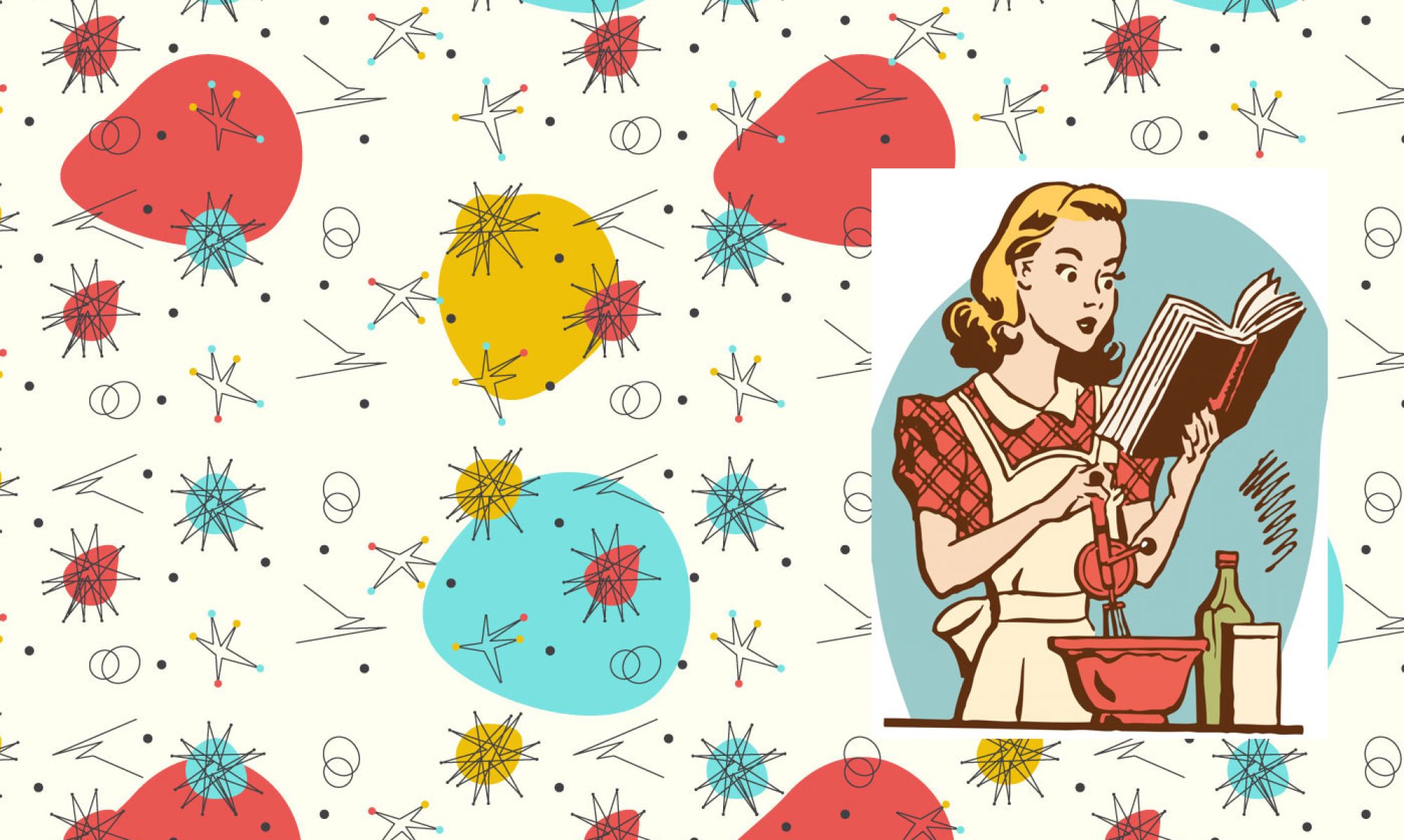In one of my earlier posts I talked about some of the many benefits of aprons to the mid-century housewife. Aprons were pretty, inexpensive and easy to sew even from scrap fabric. Food stains could be treated, scrubbed and removed from the hardy printed cotton. Aprons could be washed repeatedly and hold together. You could easily have a different apron for every day of the week. They were essential to save the expensive and difficult to launder dresses and shirts under them.
 By mid-century most women were wearing bras that we recognize as bras, if somewhat pointier and sturdier looking. They also wore panties and girdles, or panty girdles, and stockings everyday. Life was very much more formal and perhaps more uncomfortable then.
By mid-century most women were wearing bras that we recognize as bras, if somewhat pointier and sturdier looking. They also wore panties and girdles, or panty girdles, and stockings everyday. Life was very much more formal and perhaps more uncomfortable then.
My trusty 1955 Good Housekeeping magazines shows several ads for slips. One ad features a slip called “Sliperfection” made of “nylonized crepe”, whatever that is, for $1.98. Another ad is for winter weight slips made of wool, or cotton or synthetic blends. These winter slips are thicker fabric and have wider straps and a longer length for more coverage. I know from other reading that cotton slips were common. Nylon slips were popular too, and very easy care.
Why wear a slip? Firstly, to provide modesty under a light or transparent fabric. That is still the reason we wear a slip, if we wear a slip today. I don’t know many, well any, women who wear slips under their dresses or even wear dresses regularly. But the mid-century housewife did. Not that pants were never worn but most women in the era of very feminized fashion bowed to social pressure and wore a dress or a skirt and blouse most days.

And they also wore slips. They had different slips for different styles of clothing. For under dresses there were full slips with lots of lace and bows. There were also very plain full slips. Most full slips were tailored and form fitting . But some silky full slips were cut on the bias and therefore a bit stretchy. There were half slips for under skirts. They also had petticoats to puff out skirts to look fullers. You could even have pant slips to go under, for example, scratchy wool pants. So lots of varieties of slips in the mid-century.
Secondly, the other important reason to wear a slip, was once again to protect the clothes. Clothes were expensive and hard to launder before modern fabrics became available. In the case of a slip, it’s to protect the clothing from the sweat, oil and odours of the body. If you are wearing a dress made of hard to launder fabric, wearing a slip under it will help keep the dress clean longer. This saves time. Less laundering will keep the dress looking new longer as well. This saves money. Slips are like an apron but on the inside of the clothes. This is not a new idea created in the last century. For a lot of human history we have worn an easy to launder layer called a “chemise” for example, under the fancier outside layer of clothing. A sturdy cotton slip can be washed and worn for years. Think of all the time and money a mid-century housewife could save by wearing a slip.
We don’t really think about these things anymore. Washability and long wear are really not an issue for most of the clothes we wear today because clothes are relatively cheap and abundant and fabrics today are so easy to launder. We have automatic washing machines to do the cleaning everyday if we want. The fabrics need little special care, and rarely ironing. But in 1955 slips and aprons were just a smart way to dress. If you only had a few clothes and limited budgets to replace then you wanted to protect them.

